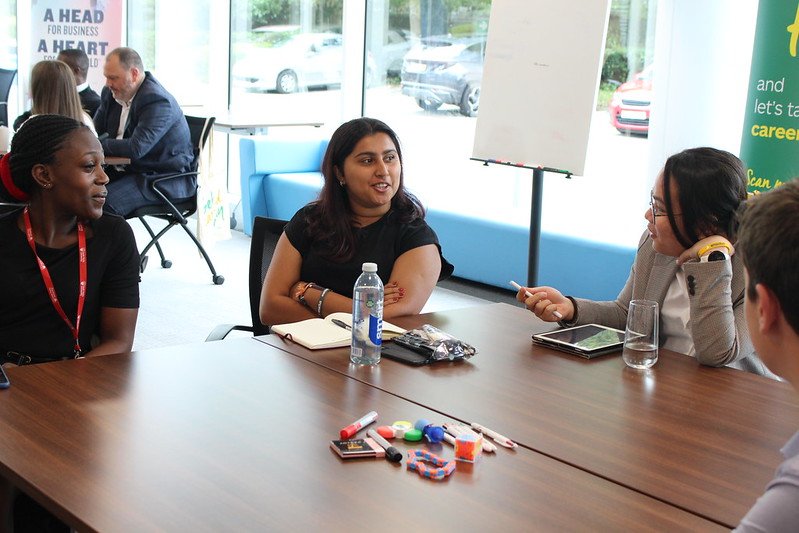GENERATING IDEAS
Generating ideas is the foundation of any successful Enactus project. It’s through innovative thinking that you can identify unique solutions to pressing social or environmental challenges. Creative ideas help push boundaries, inspire new approaches, and unlock potential for greater impact. By continually generating fresh concepts, you can ensure your projects remain dynamic, relevant, and capable of driving meaningful change in their communities. Ultimately, the more ideas you generate, the greater your chances of finding a truly transformative solution!!
Idea Generating Activities
A free-thinking exercise where you are encouraged to think of as many solutions as possible, without worrying about practicality.
Objective: Promote creative thinking and a high volume of ideas, regardless of their feasibility.
Task: Each student will have eight minutes to come up with as many ideas as possible to solve the problem you are looking at.
Crazy 8’s
YES AND…
The key to harnessing the momentum of your ideation sessions and to keep the innovations flowing is as simple as “Yes, and…”. Simply begin each sentence or response to an idea with those two very simple words. You'll be amazed at the immediate transformation of the energy in the room.
This activity helps you remain in a more generative mindset - coming up with lots of new ideas before deciding which are the best ones. Bonus: you’ll usually hear lots of laughter in the room during the Yes And activity.
Pencil Question
Divide the group up into pairs. Give every pair a pencil or project an image of a pencil. Prompt everyone to come up with as many questions as they can about this pencil in 30 seconds. Try for at least 10 questions - the crazier, the better. Now share back with the larger group.
Now repeat this activity using a picture of something relevant to your focus point!
Exploring what is happening in your community…
Research Local Initiatives: Find out if there are any local initiatives that are tackling the same or a similar issue in your community. Look at a wide range of projects, from small neighbourhood efforts to larger city-wide programs.
Assess the Impact on Beneficiaries: Analyse how well these local solutions are meeting the needs of their target beneficiaries. Are they achieving their intended outcomes? What evidence is there that they are making a positive difference in people’s lives? Look for any gaps or areas where beneficiaries' needs are still unmet.
Evaluate the Approach: Consider the strategies and methods these initiatives use. Are they sustainable? Are they inclusive? How do they engage with the community? Think about whether these approaches could be improved or adapted in your own projects!
Why not Collaborate with them?
Consider working alongside these local organisations to gain firsthand experience. Volunteering with them provides valuable insights into their operations, challenges, and impact on the community. This hands-on involvement allows you to build relationships, learn best practices, and see what works on the ground. By immersing yourselves in these initiatives, you can better understand how to run your own projects and identify opportunities for collaboration or partnership to strengthen your future solutions and impact!
Walk the aisles
Take your team out to a physical location to gather insights. If you’re working on a project around grocery store retail, for example, go to a grocery store and ask everyone to split up and take photos of things they notice.
Share images with the team through, it’s hard to get inspired when you’re cooped up in a meeting room. Mixing up your location and taking inspiration from the real world helps spark new ideas.
Get Inspired
Check out the teams that made it to the World Cup!!
Top Tips
·Using resources: post it notes, flip charts, white boards, storyboards etc., to visualise all your creative ideas!
·Be as active as possible! Get all your students up and moving, don’t just sit in one room! If you can, go out and explore the area you’re working with.
·Prototype your ideas: even simple, low-costs prototypes like sketches, mock-ups, or role-playing scenarios can help test and visualise concepts quickly!
·Set Time Limits for Brainstorming Sessions: Short, timed sessions can encourage fast thinking and prevent over-analysis. This keeps energy high and ideas flowing.
·Embrace Diverse Perspectives: Encourage input from all team members. Different backgrounds and viewpoints often spark the most innovative ideas.






